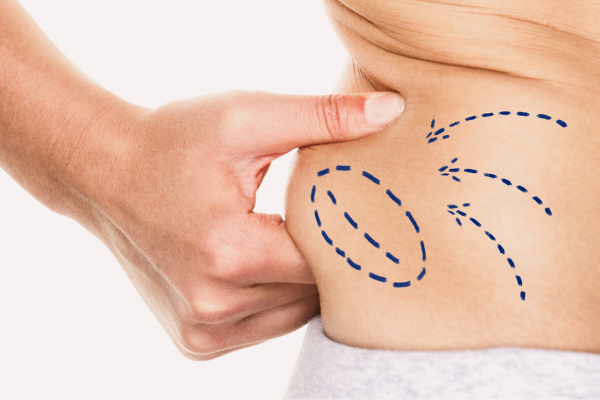𝗟𝗶𝗽𝗼𝘀𝘂𝗰𝘁𝗶𝗼𝗻
Liposuction is a method of removing fat, not fluid and theoretically it can remove fluid accumulated in pitting lymphedema without the formation of excess adipose tissue.

𝗧𝘆𝗽𝗲𝘀 𝗼𝗳 𝗟𝗶𝗽𝗼𝘀𝘂𝗰𝘁𝗶𝗼𝗻
- Tumescent Liposuction:- Tumescent liposuction is the most common technique. Your surgeon injects a sterile solution into the area where the fat needs to be removed. It contains saline- lidocaine and epinephrine. The solution facilitates fat absorption with less blood loss and pain.
- Ultrasound assisted liposuction:- UAL uses sound wave energy under your skin to break down fat cell walls. It Liquefies fat so it can be absorbed.
- Laser assisted Liposuction or smart liposuction uses a laser to produce a burst of energy to liquefy the fat.
- Power- assisted Liposuction:- PAL uses a special cannula with a mechanized system that moves rapidly back and forth, allowing the surgeon to easily drain the fat.
- Suction assisted liposuction:- SAL is a traditional form of liposuction that uses a vacuum to remove fat from your body.
𝗕𝗲𝗻𝗲𝗳𝗶𝘁𝘀 𝗼𝗳 𝗟𝗶𝗽𝗼𝘀𝘂𝗰𝘁𝗶𝗼𝗻
Improve health conditions related to fat loss.
Confidence and self-esteem boost.
Safe fat removal.
Reshape body areas where diet and exercise have failed to work
The results are mostly immediate.
Reduce pressure on blood vessels and ease circulation.
It enhances the shape and contour of your body.
𝗦𝗶𝗱𝗲 𝗲𝗳𝗳𝗲𝗰𝘁𝘀 𝗼𝗳 𝗹𝗶𝗽𝗼𝘀𝘂𝗰𝘁𝗶𝗼𝗻
Scarring
Pain and Discomfort.
Numbness
Bruising
Drowsiness
𝗥𝗶𝘀𝗸 𝗳𝗮𝗰𝘁𝗼𝗿𝘀 𝗼𝗳 𝗹𝗶𝗽𝗼𝘀𝘂𝗰𝘁𝗶𝗼𝗻
- Bleeding.
- Infections.
- Change in skin sensation.
- Damage to nerves, blood vessels, muscles, lungs and abdominal organs.
- Fluid accumulation.
- Complication from anesthesia.
- Burns from instruments.
- Reactions to lidocaine.
- Scarring.
𝗣𝗿𝗲𝗰𝗮𝘂𝘁𝗶𝗼𝗻 𝗮𝗳𝘁𝗲𝗿 𝗟𝗶𝗽𝗼𝘀𝘂𝗰𝘁𝗶𝗼𝗻
- Eat right and hydrate.
- Rest when you feel tired.
- Wear proper bandages and clothing.
- Take care of your surgical sites.
- Start walking as soon as possible, this helps to reduce swelling and lowers the chance of blood clots.
- Avoid strenuous activities such as bicycle riding, jogging, weight lifting or aerobic exercise.
𝗪𝗵𝗲𝗻 𝘁𝗼 𝗰𝗮𝗹𝗹 𝘁𝗵𝗲 𝗱𝗼𝗰𝘁𝗼𝗿 𝗮𝗳𝘁𝗲𝗿 𝗹𝗶𝗽𝗼𝘀𝘂𝗰𝘁𝗶𝗼𝗻
- Long-lasting or severe pain.
- swelling.
- fluid or blood leaking out of your surgical site.
- Fever
- Shortness of breath or chest pain.
𝗥𝗲𝗰𝗼𝘃𝗲𝗿𝘆 𝘁𝗶𝗺𝗲
Your surgeon will talk to you about your specific recovery time. Each person's recovery is different depending on how much fat and full recovery can take up to six months. During this time, usually the first six weeks, you should rest and reduce the amount of activity you do to allow your body to heal.
